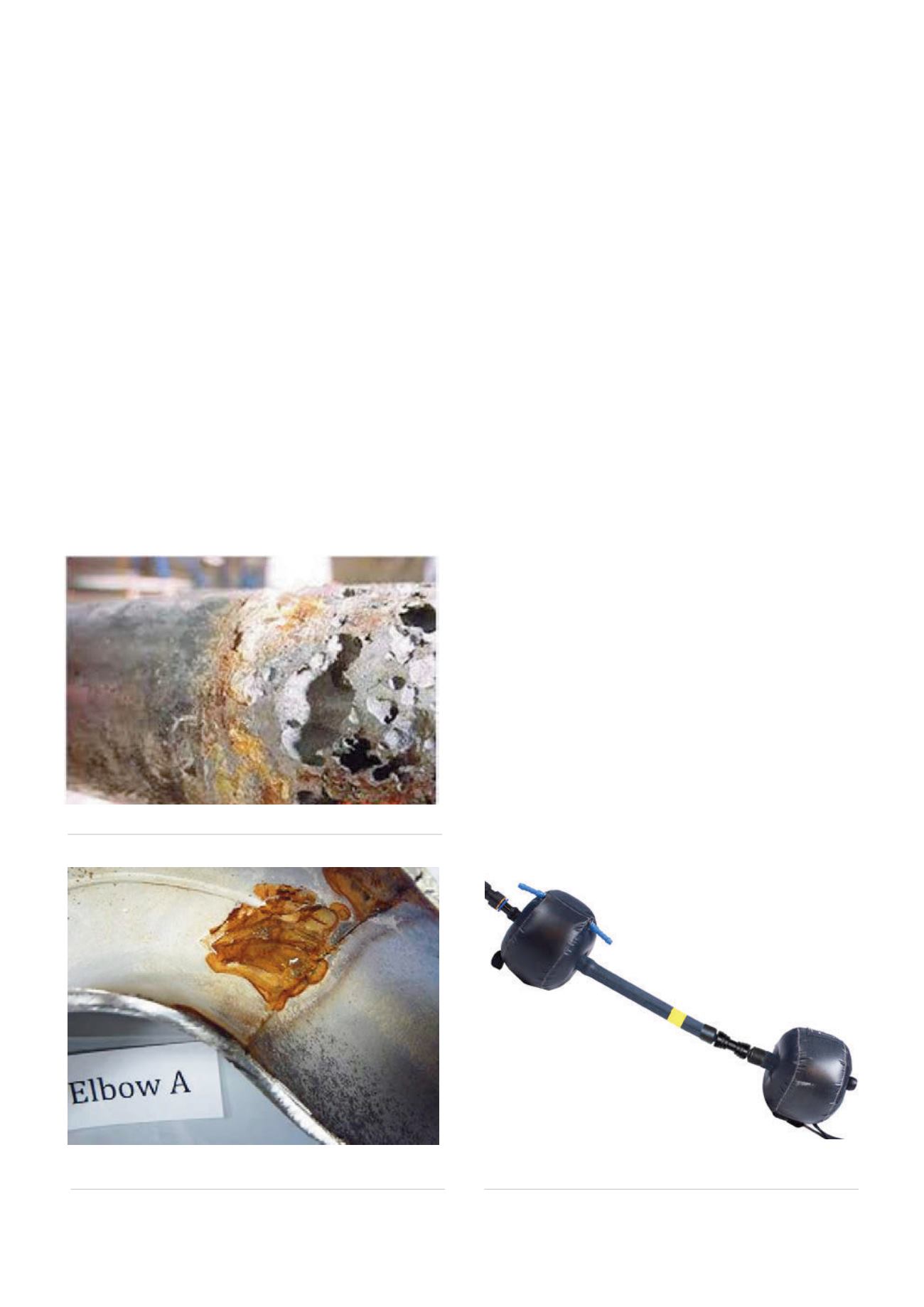
The mechanism of corrosion
Stainless steels owe their resistance to corrosion to the
formation of a very thin (10
-5
mm), transparent surface layer
of chromium oxide. This provides a passive film that acts as
a barrier to penetration by an invasive environment. When
heated to a high temperature in the presence of oxygen, this
film increases in thickness until it becomes visible – the colour
becomes darker with increasing film thickness.
At a critical film thickness, the film becomes unstable and
begins to break down. The fractured zones created offer sites
for localised corrosion, where four principle mechanisms are
involved:
)
)
Crevice corrosion.
)
)
Pitting corrosion.
)
)
Stress corrosion cracking (SCC).
)
)
Microbiologically induced corrosion (MIC).
Crevice corrosion
This is a localised corrosion of a metal surface, which is
attributable to proximity of another metal such as a weld. It is
a locally accelerated type of corrosion and is one of the major
corrosion hazards in stainless steels.
Pitting corrosion
This produces attacks in the form of spots or pits, and takes
place at points where the passive layer might be weakened:
it occurs in stainless steels where oxidation has reduced the
passivity. Once the attack has started, the material can be
completely penetrated within a short time.
SCC
This is characterised by cracks propagating either through or
along grain boundaries. It results from the combined action of
tensile stresses in the material and the presence of a corrosive
medium. It can be induced in some stainless steels by adverse
heat treatments, such as those occurring in weld heat affected
zones.
MIC
This type of corrosion is either promoted or caused by micro-
organisms, typically occurring in industries related to food,
beverage and chemical processing. It is usually referred to by
the acronym ‘MIC’ and is common in welded sections.
To avoid these forms of corrosion, it is essential that the
heat tints are properly removed before the stainless steel
equipment or piping is exposed to aggressive or aqueous
environments. The alternative is to prevent heat tinting during
the welding process by using an inert environment to protect
the surface during welding.
Removal of heat tint
Bright annealing or acid pickling can remove light
discolouration, but heavier deposits may require machining
such as grinding and polishing. Removal clearly requires access
to the area in question, not only for treatment, but also for
debris removal. Even when access is available, none of these
treatments are easy and most can be very expensive.
Whilst it is not too difficult to protect the outside surface
of a weld by using an inert gas as coverage, preventing
oxidation and loss of corrosion resistance on the inside is
often overlooked. The technique of inside protection is
known as ‘weld purging’ and uses inert gas to flush out air and
thus oxygen before and during welding.
Figure 2.
Extensive penetration following pitting corrosion in
stainless steel pipe.
Figure 3.
Example of PurgElite
®
range of fully integrated
systems covering the 25 - 250 mm pipe range.
Figure 1.
Salt water corrosion of austenitic stainless steel pipe.
76
World Pipelines
/
MARCH 2016


